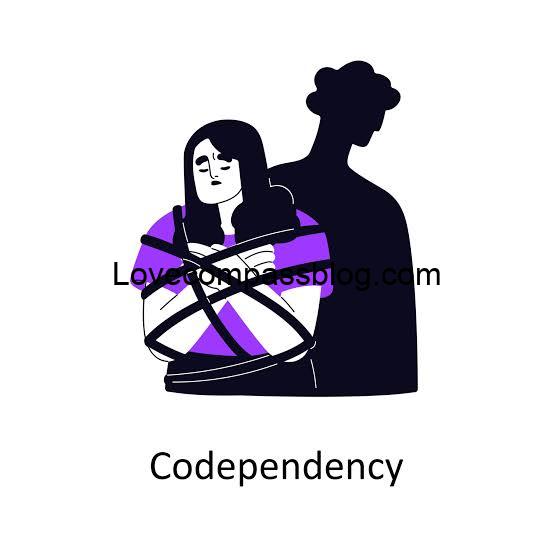How to Have Difficult Conversations Without Hurting Each Other

Difficult conversations are an integral part of every relationship, whether personal or professional. These are the moments when we must address issues that are uncomfortable, emotionally charged, or potentially conflict-ridden. The fear of causing hurt or facing backlash often leads people to avoid these discussions, but avoidance can cause more harm than good, allowing misunderstandings to fester and erode trust.
Effective communication is essential to navigate these conversations successfully, preserving relationships while addressing the underlying issues. Utilizing frameworks like the 3 C’s of communication (Clarity, Courtesy, Consistency), 4 D’s of difficult conversations (Disagree, Discuss, Decide, Deliver), and 3 F’s of feedback (Facts, Feelings, Future) provides a structured approach to managing these situations with empathy and respect. Furthermore, emotional intelligence and empathy are critical to ensuring that both parties feel understood and valued, even when the discussion is challenging.
The Nature of Difficult Conversations

Common Scenarios for Difficult Conversations
Difficult conversations arise in various contexts, each presenting its unique challenges. In intimate relationships, these discussions often revolve around deeply personal issues, such as unmet emotional needs, finances, or infidelity. Addressing these topics requires sensitivity and a clear understanding of the emotional stakes involved. For instance, a couple might struggle to discuss financial stress without triggering feelings of insecurity or blame.
In professional settings, difficult conversations can include performance reviews, addressing inappropriate behavior, or negotiating promotions. These situations often involve a power dynamic, where one party may feel vulnerable or defensive. For example, an employee receiving critical feedback might perceive it as a personal attack, leading to disengagement or resentment if not handled appropriately.
Understanding the specific scenario and its emotional implications is crucial to approaching the conversation with the right mindset. Being aware of the potential sensitivities involved helps in preparing a strategy that focuses on resolving the issue without causing unnecessary harm.
The Challenges of Conflict Resolution
Conflict resolution is inherently complex because it involves balancing differing perspectives, emotions, and needs. Communication barriers often exacerbate these challenges, leading to misinterpretations and escalation. Common barriers include defensiveness, where a person feels the need to protect themselves from perceived attacks, and emotional triggers, which can cause a person to react strongly to certain words or topics.
Another significant factor is communication styles. People typically communicate in one of three styles: assertive, passive, or aggressive. Assertive communication, where one expresses their needs clearly and respectfully, is the most effective for resolving conflicts. However, many people default to passive communication (avoiding confrontation) or aggressive communication (dominating the conversation), both of which can hinder conflict resolution. For example, a passive approach might lead to unresolved issues and simmering resentment, while an aggressive approach can result in further conflict and damaged relationships.
To overcome these challenges, it’s essential to develop an awareness of these communication barriers and actively work to address them. This involves not only recognizing one’s communication style but also being mindful of the other person’s perspective and emotional state.
Preparing for a Difficult Conversation

Setting the Stage for Constructive Dialogue
Preparation is a critical step in ensuring that a difficult conversation remains productive and respectful. Before initiating the conversation, it’s important to consider the environment and timing. Choosing a neutral setting that minimizes distractions and stressors can significantly improve the quality of the discussion. For example, discussing a sensitive issue in a quiet, private space is often more effective than in a public or high-stress environment.
Boundary setting is also essential in creating a safe space for dialogue. Establishing clear guidelines for the conversation helps both parties feel secure and respected. This might involve agreeing on rules like not interrupting each other, refraining from using accusatory language, and staying focused on the issue rather than bringing up past grievances. For instance, a couple discussing household responsibilities might agree beforehand to avoid statements like “You never help out,” which can derail the conversation into a blame game.
Using Emotional Intelligence and Empathy
Emotional intelligence is a crucial tool in preparing for and navigating difficult conversations. It involves being aware of and managing your own emotions, as well as recognizing and responding to the emotions of others. Before entering the conversation, take a moment to reflect on your emotional state. If you’re feeling particularly stressed, angry, or anxious, it may be wise to postpone the conversation until you can approach it with a calmer mindset. For instance, taking a few deep breaths or a brief walk before starting the conversation can help in reducing tension.
Active listening is another key component of emotional intelligence. During the conversation, focus fully on what the other person is saying rather than planning your response while they are speaking. This ensures that they feel heard and valued, which can significantly reduce defensiveness and foster a more open dialogue. For example, when your partner expresses concerns about feeling neglected, listen without interrupting, and then paraphrase what they said to confirm your understanding, like, “It sounds like you’re feeling unappreciated when I work late.”
Empathy in communication goes hand in hand with active listening. It involves putting yourself in the other person’s shoes and considering their feelings and perspective. This can help you respond in a way that acknowledges their concerns while also expressing your own. For example, if an employee expresses frustration about not receiving enough support, an empathetic response might be, “I understand how that could be frustrating, and I want to work with you to find a way to provide the support you need.”
Techniques for Effective Communication During Difficult Conversations

Applying the 3 C’s and 4 D’s of Communication
The 3 C’s of communication—Clarity, Courtesy, and Consistency—are fundamental principles that guide difficult conversations toward positive outcomes.
- Clarity: Being clear about your intentions, feelings, and the specific issues you want to address is crucial. Avoid vague statements that could be misinterpreted. For instance, instead of saying, “You need to change,” specify what behavior or action is problematic and why, such as, “When you cancel plans at the last minute, it makes me feel unimportant.”
- Courtesy: Courtesy emphasizes maintaining respect and politeness, even when discussing challenging topics. This means avoiding inflammatory language, personal attacks, and keeping the conversation tone calm and constructive. For example, instead of accusing someone of being “lazy,” frame your concern in a more respectful way, like, “I’ve noticed that tasks are sometimes left undone, and I’d like to discuss how we can better manage them.”
- Consistency: Consistency ensures that your message remains steady throughout the conversation, which helps avoid confusion and reinforces the points you’re trying to make. If your stance changes during the conversation, explain why, to maintain transparency and trust.
The 4 D’s of difficult conversations—Disagree, Discuss, Decide, Deliver—offer a structured approach to ensure that conversations are productive and lead to clear outcomes:
- Disagree: Start by acknowledging the disagreement. Recognize that it’s natural to have differing opinions and that this is the basis for discussion, not a personal attack. For instance, “I see that we have different views on this, and I’d like to understand your perspective better.”
- Discuss: Engage in a dialogue where both parties can express their views openly. During this stage, use assertive communication to ensure your points are made clearly without aggression. For example, “I believe that our current approach isn’t working well for me because…”
- Decide: After thoroughly discussing the issue, work together to reach a decision or agreement on how to move forward. This might involve compromising or finding a middle ground that satisfies both parties. For example, “How about we try this new approach for the next month and then reassess?”
- Deliver: Finally, implement the agreed-upon actions and continue to communicate as needed to ensure the resolution is effective. Follow up after some time to review how the new agreement is working and make adjustments if necessary.
Constructive Dialogue and Feedback
Providing feedback during a difficult conversation is often the most challenging aspect, especially when the feedback is critical. However, using the 3 F’s of feedback—Facts, Feelings, Future—can help you deliver feedback in a way that is constructive and focused on positive outcomes:
- Facts: Start by stating the facts of the situation without attaching any judgment or emotion. This keeps the conversation objective and prevents the other person from feeling personally attacked. For example, “Over the past two weeks, I’ve noticed that you’ve missed three deadlines.”
- Feelings: Next, express how these facts have impacted you or others, linking them to your emotions. This helps the other person understand the emotional context without feeling blamed. For example, “When deadlines are missed, it makes me feel like our team’s work isn’t being prioritized.”
- Future: Finally, suggest ways to improve the situation moving forward, focusing on solutions rather than dwelling on the problem. For example, “In the future, I’d appreciate it if we could discuss any potential delays in advance, so we can plan accordingly.”
This approach ensures that the conversation remains focused on resolving the issue and improving the relationship, rather than getting bogged down in negativity or blame.
Managing Conflict in Relationships

Conflict Resolution Strategies
In any relationship, conflict is inevitable, but it doesn’t have to be destructive. Conflict management involves a set of strategies designed to address disagreements in a way that minimizes harm and maximizes understanding. One key strategy is de-escalating conflict when emotions run high. This might involve taking a break from the conversation to allow both parties to cool down before resuming the discussion. For instance, saying, “I think we’re both too upset to continue this right now. Let’s take a 10-minute break and then talk again,” can prevent the conversation from spiraling into a heated argument.
Another important aspect of conflict resolution is reframing negative thoughts into more constructive ones. Reframing involves shifting your perspective to see the conflict in a more positive or neutral light. For example, instead of thinking, “They don’t care about my feelings,” you might reframe it as, “They may not understand how I feel; I need to communicate it more clearly.” This shift in thinking can reduce defensiveness and open the door to a more productive conversation.
Using “I” statements is another effective technique for managing conflict. Instead of placing blame with statements like “You always…” or “You never…”, which can provoke defensiveness, focus on your own feelings and experiences. For example, “I feel frustrated when tasks aren’t completed because it affects our team’s performance.” This approach helps to express your concerns without accusing or attacking the other person, which can keep the conversation focused on finding a solution rather than assigning blame.
Disagreement Resolution
Not all disagreements need to be resolved by one party “winning” and the other “losing.” In many cases, the goal should be to find a resolution that respects both parties’ perspectives. This might involve compromise, where each person gives a little to reach a mutually acceptable solution. For example, if a couple is arguing about how to spend a weekend, a compromise might involve splitting the time between activities that both enjoy.
In some situations, it may be best to agree to disagree. This is especially true in cases where the issue is not central to the relationship’s core values or daily functioning. As long as both parties feel heard and respected, it’s perfectly healthy to have differing opinions on some matters. For example, two people might have different political views but agree to focus on the many areas where they do align, rather than letting their differences cause ongoing conflict.
Avoiding Common Communication Pitfalls
During difficult conversations, it’s easy to fall into traps that can derail the discussion. One of the most common pitfalls is defensiveness. When someone feels attacked, their natural reaction is often to defend themselves, which can quickly escalate the conversation into an argument. To avoid this, it’s important to approach the conversation with an open mind and a willingness to listen. For example, if you’re receiving criticism, try to view it as an opportunity to improve rather than a personal attack.
Another pitfall is stonewalling, where one person shuts down or refuses to engage in the conversation. This can be incredibly frustrating for the other party and often leads to a breakdown in communication. To avoid stonewalling, it’s important to stay engaged in the conversation, even if it’s uncomfortable. If you need a break, it’s okay to request one, but make sure to return to the discussion when you’re ready.
Blaming is another common issue that can turn a difficult conversation into a destructive one. Blaming puts the focus on assigning fault rather than finding a solution, which can lead to resentment and further conflict. Instead of blaming, try to focus on the behavior or situation that needs to be addressed, and work together to find a solution. For example, instead of saying, “It’s your fault we’re in this mess,” you might say, “I think we both made some mistakes here. Let’s figure out how we can fix this together.”
Building and Maintaining Healthy Communication Habits

Developing Positive Communication Habits
Building and maintaining healthy communication habits is essential for fostering strong relationships and ensuring that difficult conversations are handled with care. One of the most important habits is to have regular trust-building conversations. These are discussions where both parties can openly share their thoughts and feelings without fear of judgment or retaliation. For example, couples might set aside time each week to discuss their relationship and any concerns they have in a supportive, non-confrontational way.
Collaborative communication is another key habit. This involves approaching conversations with the mindset that you’re working together to solve a problem, rather than against each other. For example, when discussing how to divide household chores, both partners might brainstorm solutions together rather than one person dictating the terms. This approach fosters a sense of partnership and mutual respect.
Encouraging honest communication is also vital. This means being truthful and straightforward in your interactions, even when it’s difficult. However, honesty should be tempered with tact and empathy, especially when discussing sensitive topics. For instance, instead of bluntly saying, “You’re wrong,” you might say, “I see your point, but I have a different perspective.” This allows you to express your views honestly without dismissing the other person’s feelings.
Long-Term Relationship Harmony
Achieving and maintaining relationship harmony requires ongoing effort and a commitment to mutual understanding. This involves continuously working to understand each other’s perspectives, even when they differ from your own. It also requires respecting differences and recognizing that it’s okay for you and your partner to have different needs, preferences, and opinions. For example, if one partner values punctuality and the other is more relaxed about time, finding a middle ground where both feel respected can help maintain harmony.
Diplomatic communication plays a crucial role in managing ongoing conflicts without damaging the relationship. This involves being tactful, choosing your words carefully, and always striving to maintain respect and empathy, even in the heat of the moment. For instance, instead of saying, “You’re being unreasonable,” you might say, “I think we’re seeing this issue from different angles. Let’s try to find some common ground.”
Diplomatic communication not only helps resolve current conflicts but also sets a positive tone for future interactions, fostering a relationship environment where both parties feel valued and understood.
Practical Examples and Case Studies

Examples of Successful Difficult Conversations
Let’s look at a couple of examples where difficult conversations were handled successfully.
In one case, a couple struggling with communication decided to discuss their differing views on finances. By applying the 3 C’s—being clear about their financial goals, courteous in their discussion, and consistent in their approach to budgeting—they were able to come to an agreement on how to manage their finances more effectively without resentment. They used “I” statements to express their concerns, like, “I feel anxious when we don’t stick to our budget,” which helped keep the conversation focused on their feelings rather than blaming each other.
In another example, a manager needed to give feedback to an employee who had been underperforming. By using the 3 F’s of feedback, the manager addressed the issue directly while also showing empathy and providing a clear path forward for improvement. The conversation began with the manager stating the facts: “I’ve noticed that your reports have been late three times this month.” Next, the manager expressed their feelings: “This impacts our team’s ability to meet deadlines, and it concerns me.” Finally, they focused on the future: “Let’s work together to identify any obstacles you’re facing and find a solution so this doesn’t happen again.” This approach helped the employee feel supported rather than criticized, leading to a positive outcome.
Common Mistakes and How to Avoid Them
One common mistake during difficult conversations is failing to prepare adequately. This can lead to being caught off guard by the other person’s reactions or not knowing how to respond to unexpected challenges. To avoid this, take the time to think through the conversation in advance, considering both your perspective and the other person’s. This might involve preparing specific points you want to address or rehearsing how you’ll respond if the conversation becomes heated.
Another mistake is letting emotions take over. When emotions run high, it’s easy to say things you don’t mean or escalate the situation unintentionally. To avoid this, practice emotional regulation techniques, such as deep breathing or taking a short break if you feel yourself becoming too emotional. Remember that staying calm and focused is key to keeping the conversation on track.
A third mistake is failing to listen actively. Often, people are so focused on getting their own point across that they don’t really hear what the other person is saying. This can lead to misunderstandings and missed opportunities for resolution. To avoid this, make a conscious effort to listen fully to the other person’s words, and then paraphrase what you heard to ensure you understood them correctly. This not only shows that you value their input but also helps clarify any points of confusion.
Conclusion
Successfully navigating difficult conversations requires a blend of preparation, empathy, and effective communication strategies. By applying the techniques discussed—such as the 3 C’s, 4 D’s, and 3 F’s—you can address sensitive issues in a way that preserves relationships and promotes mutual understanding. Remember, the goal of these conversations is not to “win” but to find a solution that respects both parties’ perspectives and needs.
By continuously practicing these skills, you can improve your ability to handle difficult conversations with care, compassion, and confidence, ultimately leading to stronger, healthier relationships.




